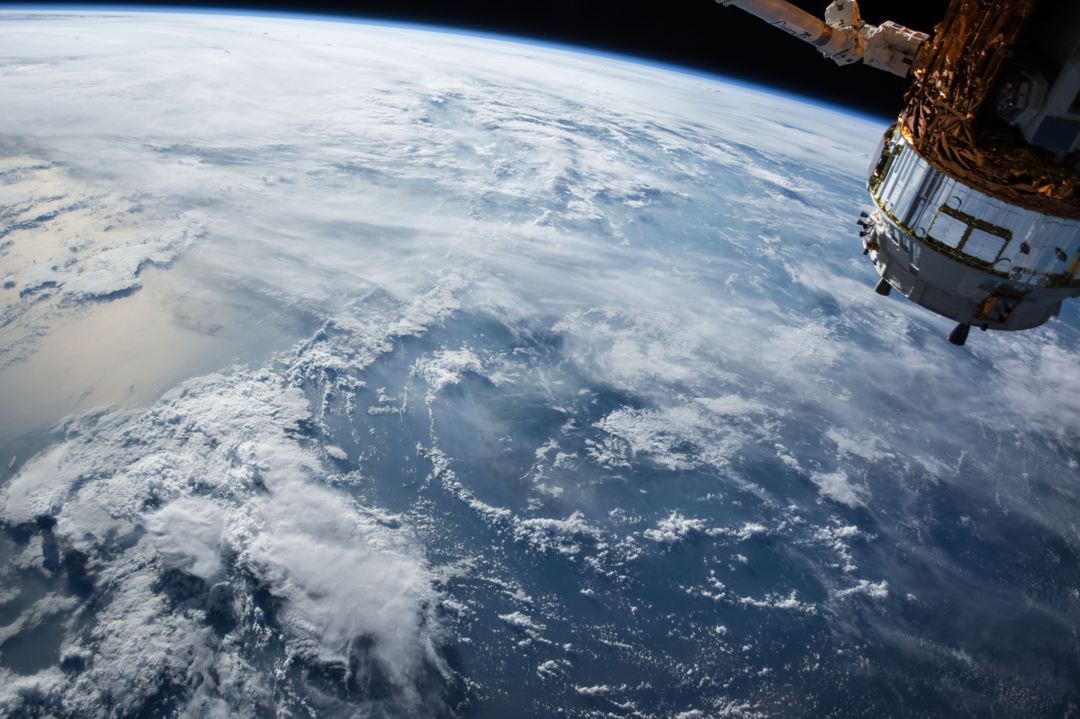5G and Low Earth Orbit

We recently posted a blog article regarding the role 5G wireless networking service will play for the next decade. There is an interesting frontier under development that is worth taking a look at. One of the previously extraneous modes of communication, satellite networking service, has proven to be both a powerful mode of communication and a value-added component of terrestrial services, like the upcoming 5G network. The near future for 5G and satellite service promises some great advances, especially for customers and businesses in more challenging coverage areas.
Ground Control to Major Tom
Hughes Aircraft built the first three synchronous communication satellites, which were launched in 1963 (Syncom 1 & 2) and 1964 (Syncom 3). Today, the successor Hughes Network Systems company offers Internet service through its constellation of satellites to 1.2 million residential and business customers. Despite all these great advances over the last 55 years, satellite service has been better known for what it has not provided: reliable speed. In technical terms, this is known as latency. One of the big advances that terrestrial based systems promise to reduce with the new 5G network coming in 2019, is low latency. In fact, one of the three special classes coming with 5G service is Ultra Reliable and Low Latency Communications (URLLC). This new class has been seen as possibly replacing satellite services like GPS. Satellite communications companies, however, want to offer a different approach. They believe that, like the 5G service on land, the next generation of satellites can offer competitive service, be integrated with the 5G network, and reach customers not previously reached by older wireless networks.
Historically, the satellites we are most familiar with operate in what is called geostationary earth orbit (GEO). Like the Hughes Aircraft satellites, these were set to orbit at an altitude of about 22,300 miles in elevation. This originally was identified as the most stable orbital path for an object to both continuously fall and travel fast enough to counteract that fall (the physics of how a satellite stays in orbit). So at 22,300 miles (35,800 kilometers), a satellite will complete its path in just under 24 hours. This height also was considered optimal to provide maximum coverage to population-dense parts of the globe with a minimum number of satellites (3 in the original plan). At 22,000 miles, however, there are a lot of variables that negatively affect communications quality.
Source: Ian Poole, “Geostationary Satellite Orbit,GEO”, Radio-Electronics, December 2018, https://www.radio-electronics.com/info/satellite/satellite-orbits/geostationary-earth-orbit.php.
Latency for GEO satellites averages between 500 and 700 milliseconds. This is combined with the speed of the signal to produce delays. Additionally, signal strength weakens significantly with the distance. Amplifiers and processors are needed to counter the effects of the distance. Finally, the weather has a significant impact on the reliability of a signal. Stormy weather can sometimes make satellite connections practically impossible. Clearly, another system was needed. We needed something closer to us.
Time to Leave the Capsule
The 1957 launch of Sputnik 1 produced the very first low earth orbit (LEO) satellite. It moved around the earth every 96 minutes in an elliptical orbit that was 583 miles at its highest altitude. The capabilities of this Soviet satellite inspired the concept of a constellation (orbiting network) of satellites that could communicate together to provide coverage and relay signals across distances.
In the 1990s, a first attempt was made to build a low earth orbit (LEO) network. The Teledesic project proposed to put 840 satellites in orbit at about 435 miles altitude. This high-cost project failed, but it inspired a later generation of entrepreneurs to learn and combine technological advances to build a better model for deployment.
Source: Larry Press, “Will Low-Earth Orbit Satellite Internet Service Providers Succeed?”, CircleID, October 24, 2017, http://www.circleid.com/posts/20171024_will_low_earth_orbit_satellite_internet_service_providers_succeed/.
The second attempt was made toward the beginning of the millennium and produced the satellite phone network commonly referred to as Iridium. Motorola financed the first generation of Iridium satellites, and the defense industry took advantage of the capabilities in difficult regions like Afghanistan. Commercial plans were also successfully sold using this network.
Iridium moved on to the second generation called Iridium Next a decade later and chose Thales Alenia Space to build these satellites. SpaceX was contracted to launch them and complete the constellation by next year (2019). Thales radios were widely used by the US military in regions like Afghanistan and Iraq, giving the company valuable experience and research needed to improve the quality of service. Iridium has also proven the value of maintaining in-orbit spare satellites, ready for use as operational units fail. The altitude of the Iridium Next constellation is about 485 miles, which puts the satellites in LEO, and not too far from the original Teledesic zone.
Source: “Iridium NEXT”, European Space Agency, December, 2018, https://earth.esa.int/web/eoportal/satellite-missions/i/iridium-next.
Today, these companies are regularly in the news: SpaceX, OneWeb, Iridium, and Hughes Net. Experience and engineering have enabled these companies to succeed where the earlier generation of equally bright engineers failed.
Here Am I Sitting in a Tin Can
The planned constellations of thousands of satellites 200-500 miles up in the sky puts these systems in the same range as the International Space Station (199 miles altitude) and the Hubble Telescope (353 miles altitude). This is positive for communications, especially in the ISS, but poses some challenges for debris management as the effects of weather, time, and orbital decay occur. SpaceX hopes to help mitigate this threat by recapturing satellites and using parts of them for long-term use. The US previously recovered old satellites with the NASA space shuttle program. NASA tracks hundreds of thousands of pieces of space debris through their Astromaterials Research and Exploration Science program. The effects of the debris are similar to sandblasting on solar panels and optical instruments. There is also the Interagency Space Debris Coordination Committee made up of all the major nations and agencies that are active in space. This committee has helped shape guidelines like the policy of removing satellites within 25 years of the end of their mission. Through these guidelines, the global community has at least a reasonable framework for keeping the different regions of orbital zones usable. As LEO satellite networks are further developed, there will be a business opportunity for cleaning the different zones. For an idea of how dense the debris fields are, NASA has simulation images using existing data. The LEO region is already densely populated with debris and constitutes the highest concentration zone in orbit around earth.
Source: “Orbital Debris Program Office” National Aeronautics and Space Administration, December, 2018, https://orbitaldebris.jsc.nasa.gov.
Far Above the World
We mentioned latency earlier, and this is perhaps one of the biggest driving factors behind the next generation of network services both on land and in the sky. The 5G network has a targeted goal of 1-millisecond latency. No satellite system can hope to achieve that now (neither can the 5G network yet), but the LEO constellations do have a targeted latency goal of 50 milliseconds. In relative terms, that puts satellite service for voice, data, video, and other services within reason. Once those capabilities are proven, there will be access to customers and markets that have been largely untouched.
Source: Will Sitch, “9 Myths About 5G Technology”, Enterprise Innovation, June 29, 2018, https://www.enterpriseinnovation.net/article/nine-myths-about-5g-technology-415657245.
Can You Hear Me, Major Tom?
For people in the US and Europe, it is hard to truly appreciate, but a large segment of the global population still does not have a reliable voice and data service. Estimates range from between 37% and 50% of the global population that are still not being served. Terrestrial systems have made in-roads to places like the African market, but large segments of the Asian market have not yet been served. With proven, successful LEO networks providing direct service to remote customers, new business models will emerge. A shift in the way we do business is coming.
Source: Patrick Gannon, “Satellite and 5G – Should We Care?”, Businesscom Networks, February 12, 2018, https://www.bcsatellite.net/blog/satellite-and-5g.
One of the inevitable shifts coming for the commercial business sector is a mobile-first strategy. Websites, applications, and services will need to be designed or updated to prioritize mobile customers. Satellite service has been included for the first time in the technical standards of the next network. In many ways, 5G is expected to use satellite services as a part of the overall function and design.
The 5G network advances are expected to lead to a massive shift in the amount of data collected, transferred, and stored. Machine to machine (M2M) communications along with a proliferation of sensors in common appliances will enable improvements to customers in all markets. Satellite networks will facilitate the data flow from remote systems to cloud storage on 5G networks. Geolocation and inventory tracking will become much more effective with near real-time reporting capabilities of shipments around the globe. Low latency networks open significant doors to companies needing improved business continuity plans with backups and data stores transferred to cloud systems.
The millimeter wave bands that 5G service is specified to operate within will carry distance limitations. There are technical solutions being proposed to help counter those effects, but the ready-made alternative is integration with satellite service providers. The Ultra Reliable and Low Latency Communications (URLLC) demands of autonomous driving cars may be too much for the capabilities of satellite Internet service in the next two years, but the forthcoming networks from Iridium and Hughes Net will be able to serve even those needs by the end of the 2020s. Autonomous cars may have to be limited to terrestrial networks within metropolitan areas, but rail networks could see an increasing shift to autonomous lines in the near future.
Can You Hear Me, Major Tom?
The capabilities of orbiting networks will be a multiplier to terrestrial services over the next decade. While originally conceived as an alternative to the limitations of land-based systems, satellite communications have now evolved to be integrated into all the available options on the market. We have learned from our failures, and built upon our successes. We have seen the dangers inherent with operating in a challenging environment like space, and developed policies and guidelines to make the orbital zones accessible and usable by all. We have set the stage for people to begin communicating in parts of the earth that have never been able to afford the services offered to the industrialized populations. This presents a massive new market and brings tremendous new opportunities. The next data heavy shift powered by 5G networks on land will be catapulted by the capabilities of LEO networks. Sensor data, M2M, and of course all the mobile platforms will increasingly generate, transfer, and consume data in volumes not thinkable a generation ago.
Enterprise-Level CyberSecurity for All Businesses
Let our professional team of system engineers and network administrators ensure your company’s cybersecurity through our managed services offering. Start the conversation by completing the form below or give us a call at 405.810.8005.
Recent Posts
About The Author
Christoper Watson is an Information Technology professional with success in both public and private sector businesses. Technical and business experience is complimented with operational and strategic planning, international contracting work, leadership development and team building competency in challenging physical and political environments. Experience leverages strengths with technology services and providing timely and relevant information to senior executive leadership. Christopher is based out of the Oklahoma City office.






Leave A Comment